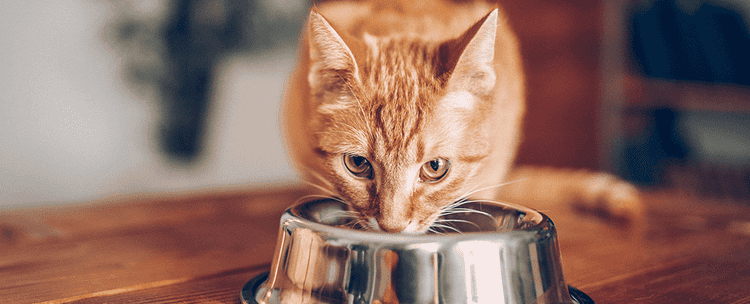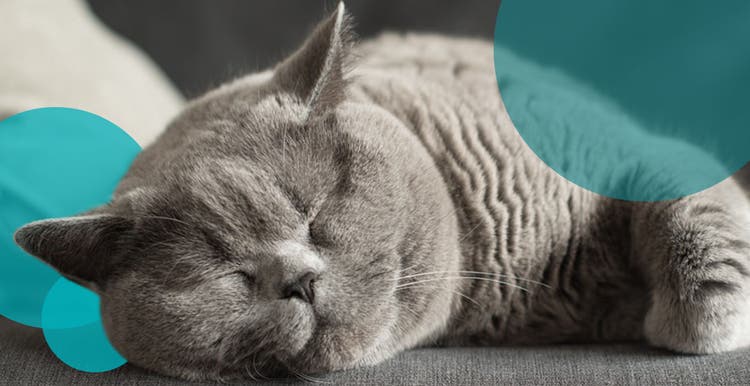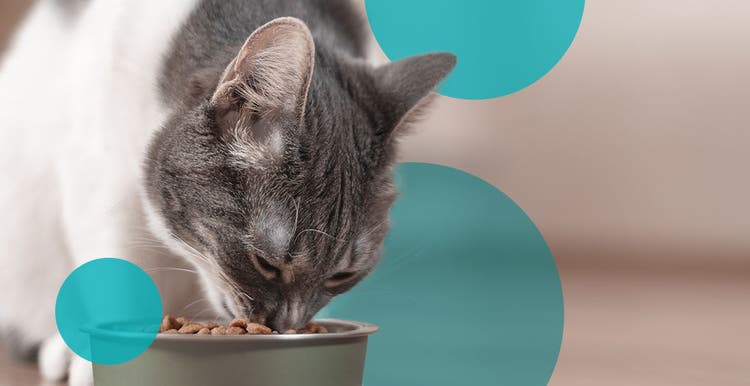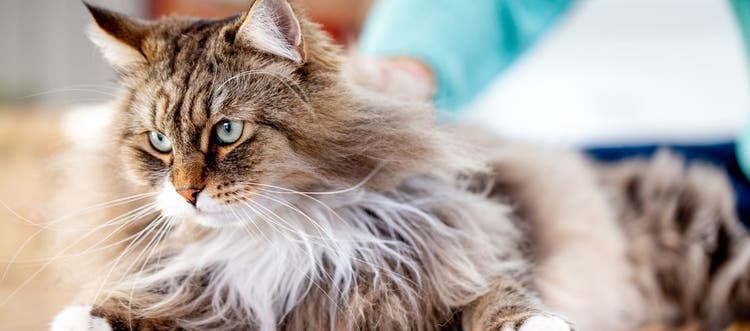Your cat’s nutrition requirements change as they grow and age. Here’s how to pick the best cat food for your pet.
Whether they’re kittens, adults or seniors, cats have distinct nutritional requirements based on their age. In other words, what they eat matters! Providing your cat with the right nutrition helps support their overall health and well-being.
To know what to feed your cat, you’ll need to understand the basics: the building blocks of cat nutrition, the different food choices available, and the specific nutrition needs for kittens, seniors and every cat in between.
Cat Nutrition Requirements: The Building Blocks Your Cat Needs
Understanding the key components of cat nutrition is the first step in providing a balanced and healthy diet for your thriving feline. The primary building blocks of cat nutrition include:
- Proteins and amino acids: Proteins are essential for a cat’s growth and maintenance, and also help heal wounds and injured tissue. Cats are strict carnivores, meaning their diet should be high in animal-based proteins. Amino acids, the building blocks of proteins, are crucial for various physiological functions in cats.
- Fats and fatty acids: Fats are a concentrated source of energy for cats. They also play a vital role in maintaining healthy skin and a shiny coat. Omega-3 and omega-6 fatty acids are essential for overall health, including immune function and inflammation regulation.
- Calories (aka energy): Calories provide the energy cats need to carry out their daily activities, from toy chasing to vigorous napping. The number of calories required depends on factors like age, activity level and overall health.
- Vitamins and minerals: These are necessary for various physiological processes, including immune support, bone health and enzyme function. Cats need specific vitamins and minerals in their diet to prevent deficiencies and stay healthy.
How to Choose a Cat Food
Consider these four factors when deciding on the best food for your cat:
- Food forms: Cat foods come in various forms, such as dry kibble, semi-moist and wet canned options. Each form has its advantages and disadvantages. Dry kibble is convenient and aids in dental health, while wet food provides additional moisture and may be more palatable for some cats.
- Food types: One trip to the pet store and you’ll find a buffet of cat food categories, including limited ingredient, raw, organic and more. Look for products that meet the definitions of the Association of American Feed Control Officials (AAFCO) on the packaging, as this ensures the food meets the necessary nutritional standards.
- Safety considerations: Always choose cat food from reputable brands that prioritize quality and safety. Check for recalls and research the brand’s manufacturing practices before you buy.
- Consulting a veterinarian: When in doubt, ask your vet. They can provide personalized dietary recommendations based on your cat’s individual needs, health conditions and life stage.
What to Feed a Cat by Age
What to Feed Kittens
Kittens have small stomachs and need to eat more frequently than adult cats, so providing multiple meals throughout the day is ideal.
Kittens also have unique nutritional requirements due to their rapid growth and development, so consider foods that include high-quality, easily digestible protein, which is essential for supporting their growing muscles and tissues. Other nutrients to watch for are calcium and phosphorus, which are important for proper bone development in kittens, and DHA, an omega-3 fatty acid crucial for brain and eye development.
What to Feed Adult Cats
For most adult cats, a well-balanced diet with appropriate nutrient levels will work just fine. Maintain a diet rich in animal-based proteins to meet their carnivorous nature, but be sure to monitor their weight and adjust their calorie intake if needed to prevent obesity. Consider serving dry kibble to promote dental health and reduce plaque and tartar buildup.
What to Feed Senior Cats
Senior cats have specific nutritional needs to support their aging bodies. They are also prone to illnesses or conditions that may influence their diet. Weight gain in older cats is quite common due to decreased activity levels, so make sure to monitor their calorie intake, and consider feeding a “weight management” or “indoor cat” food. Some senior cats may have dental problems and may prefer soft or wet food. Supplements like glucosamine and chondroitin can help support and maintain joint health and mobility.1 Lastly, senior cats with kidney issues may benefit from a diet with controlled phosphorus levels, protein and sodium.2
What Happens If My Cat Doesn’t Get Proper Nutrition?
Poor nutrition in cats can lead to a range of health risks and complications that can affect their quality of life, including:
- Nutritional deficiencies
- Obesity
- Diabetes
- Urinary tract issues
- Dental problems
- Skin and coat problems
- Gastrointestinal disorders
- Weakened immune system
- Muscle wasting
- Reduced lifespan and quality of life
That’s why it’s so crucial to feed your cat a well-balanced diet that provides all the necessary nutrients for optimal health. Asking your vet’s opinion can help you determine the best diet for your cat's specific needs, age and health condition. Your goal is to provide a balanced diet that meets your cat’s individual requirements, helps prevent these risks and promotes a long and healthy life.
References
- Simonson A, PetMD. How to Find the Best Joint Supplements for Cats. (November 8, 2022) https://www.petmd.com/cat/care/best-joint-supplements-for-cats.
- Cornell Feline Health Center. Chronic Kidney Disease. (March 2019) https://www.vet.cornell.edu/departments-centers-and-institutes/cornell-feline-health-center/health-information/feline-health-topics/chronic-kidney-disease.






